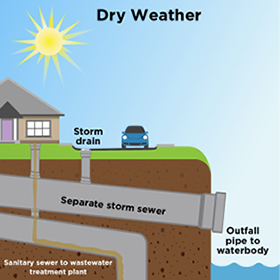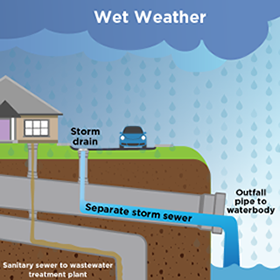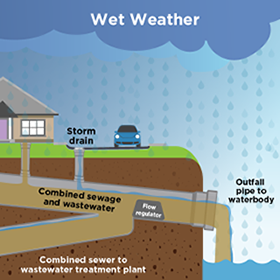Combined sewers are a characteristic design of older sewer systems, dating back to 1855 when they were introduced as a significant improvement over urban ditches running along city streets. These systems collect both sewage and stormwater in a single pipe. In Onondaga County, the City of Syracuse has a combined sewer system (CSS), while other municipalities have separate stormwater and sewer systems.
During heavy rainfall or snowmelt, the volume of water can exceed the capacity of the combined sewer system. To manage this excess flow, combined sewer outfalls discharge the surplus flow into local tributaries, resulting in combined sewer overflows (CSOs), a water pollution and public health concern because they can introduce harmful bacteria, debris, and other hazardous substances into local waterways, posing risks to people, pets, and wildlife. CSOs can cause recreational area closures, algae growth, and reduced oxygen levels in waterways, too.
|










